It ushers in a new direction for Custom Line, and debuts exciting new technical and styling features. More importantly still, it is singlehandedly evolving a hugely successful range whilst retaining its original core philosophy. There is no doubt, in fact, that the Navetta 30 is writing a whole new chapter in the history of an already iconic brand. Its design was to all intents and purposes a team effort.
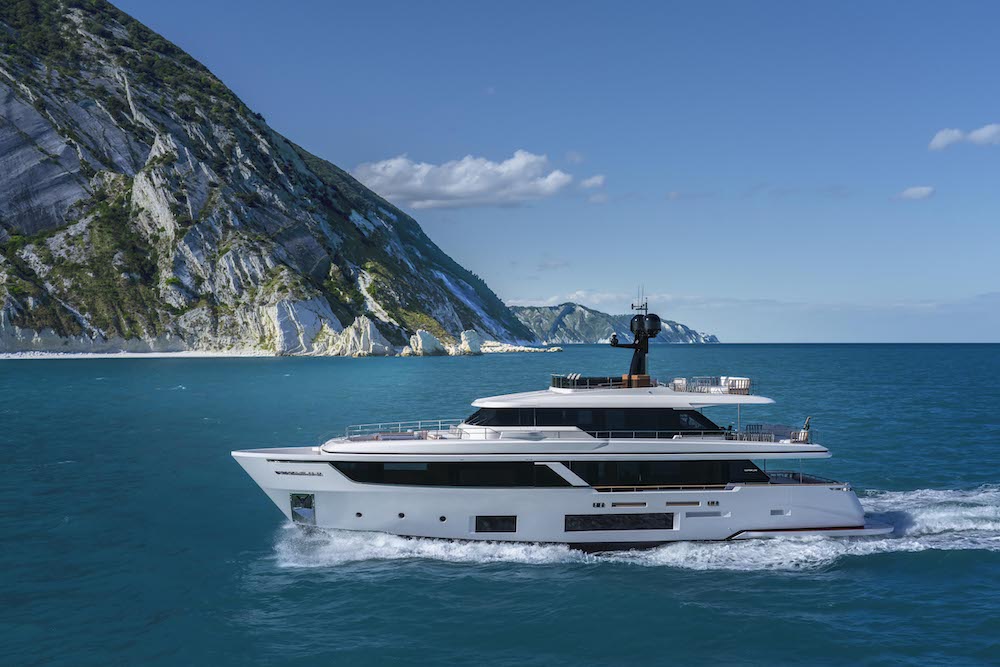
The latest arrival from Custom Line is the fruit of a collaboration between Ferretti’s Strategic Product Department, headed by none other than Piero Ferrari, the Antonio Citterio Patricia Viel architecture studio which crafted the interiors, and Filippo Salvetti who styled the exterior lines. Although he had already designed several craft for Ferretti Yachts, the Navetta 30 was still a real first for Salvetti. So it is with this successful young designer we begin our three-stage tale of the guidelines that influenced this project at every level.
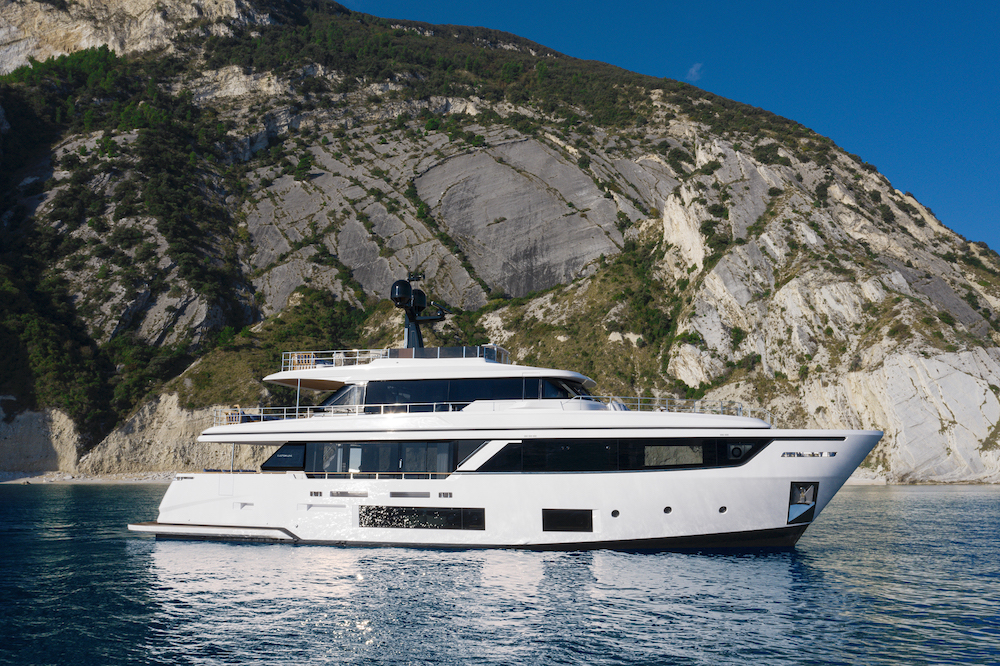
“It was originally an evolution of the Navetta 28. We actually began with that model’s forms to explore a new design direction,” Salvetti says. An important starting point but one that also, ironically, took the team off on a completely different course. “The design changed direction as it evolved,” continues Salvetti. “The yard’s brief was to pour all of the stylistic and technical content from larger craft into the Navetta 30. This meant we had to increase the spacings between decks and most importantly of all, really focus on comfortable onboard living with a design created for longevity. But the real ace in terms of the exterior architecture was when we clothed the Navetta 30’s very generous volumes in a hugely elegant bespoke exterior”.

The greatest challenge in that regard was juggling the length-to-height ratio. The 30 has an LOA of 28.43 metres (23.85 m along the waterline) and is the entry level model of Custom Line’s Navetta range but at the same time it delivers more space and surface area than other craft of similar dimensions. No small feat given that it has a maximum beam of 7.31 metres. The development of the styling also had to keep in mind the philosophy that makes the entire Custom Line range so instantly recognisable. Not least the term Navetta itself which was a very deliberate choice and identifies a specific type of boat, meaning that by its very nature, it has certain forms set in stone. The creative thrust was to produce a beautifully proportioned, balanced contemporary line. This was achieved in part through styling cues that characterise certain elements.
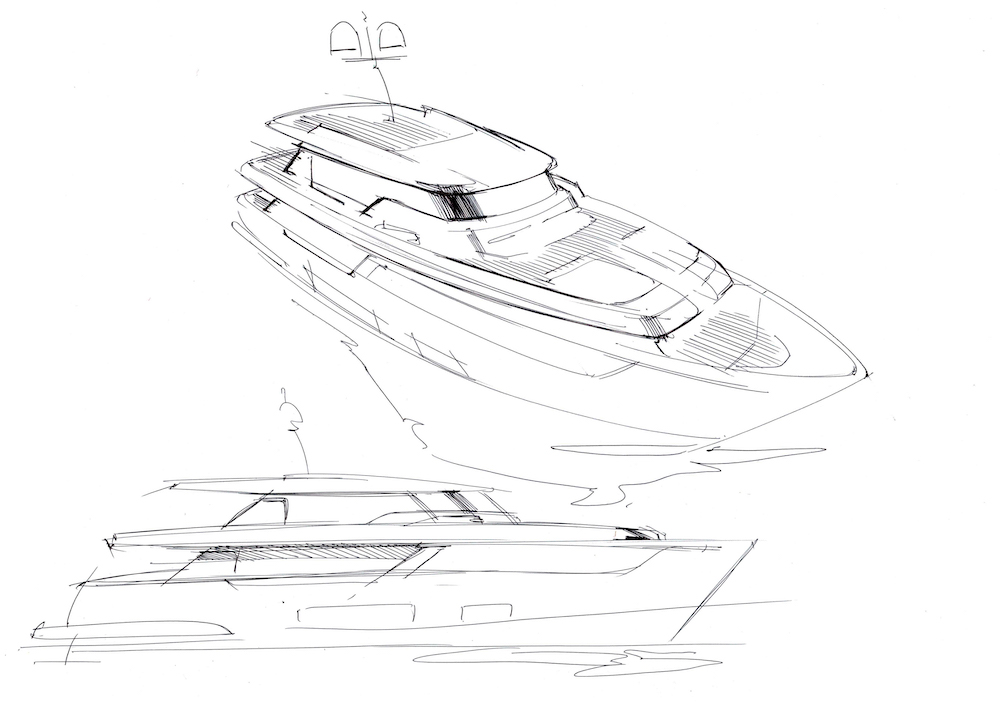
The bow section is a case in point. Designed as a wide body, it accommodates the master suite which makes the very most of the volume and takes up the entire beam. “It was very challenging to marry the functional side with a more formal one at that point. From a purely stylistic point of view, the bow design contributes greatly to imbuing any yacht’s profile with character and dynamism. In the specific case of the Navetta 30, this section had also to take large volumes into account and camouflage them to soften their visual and aesthetic impact. So in the end, it was a key element in the exterior design,” explains Salvetti.
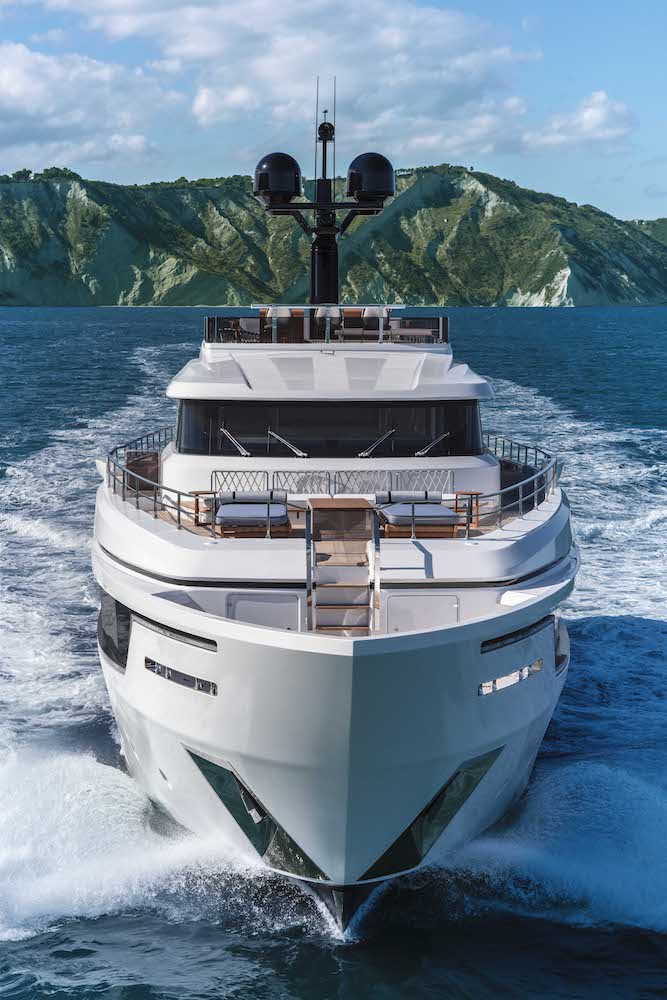
Hence the choice to include a black lifting strake which runs up from the quickworks to the bow as per the planing Custom lines. “This colour solution allowed us to reduce the white volume in that area of the hull and lent the profile a more decisive sleekness”. There are also further black elements, such as the windows, which also help highlight the vertical volumes of the Navetta 30’s superstructure . “This meant we not only managed to obtain a very elegant colour contrast but at the same time, achieved our objective of giving the whole package a more dynamic, streamlined impact”.

The glazing aboard deserves a mention all of its own too. The windows on both the hull and superstructure connect the interior with the surrounding environment, a central theme in today’s onboard living ethos. Additionally, however, they also characterise the boat’s aesthetic to a large extent. Glass-making technology has come on in leaps and bounds of late with the result that larger windows are now more widely used aboard. In some projects, they are downright overused. But not in the Navetta 30. “The windows imposed very strict constraints not just on the exterior but also in the development of the interiors,” explains Salvetti “Their recent popularity has had a major impact on yacht design. In the case of the Navetta 30, however, we deliberately resisted the temptation to excessively denature certain structural elements, such as the hull which had to continue to make its presence felt. Hence the decision to use hull windows that don’t feel bulky and actually help enhance the flow of the exterior lines”.
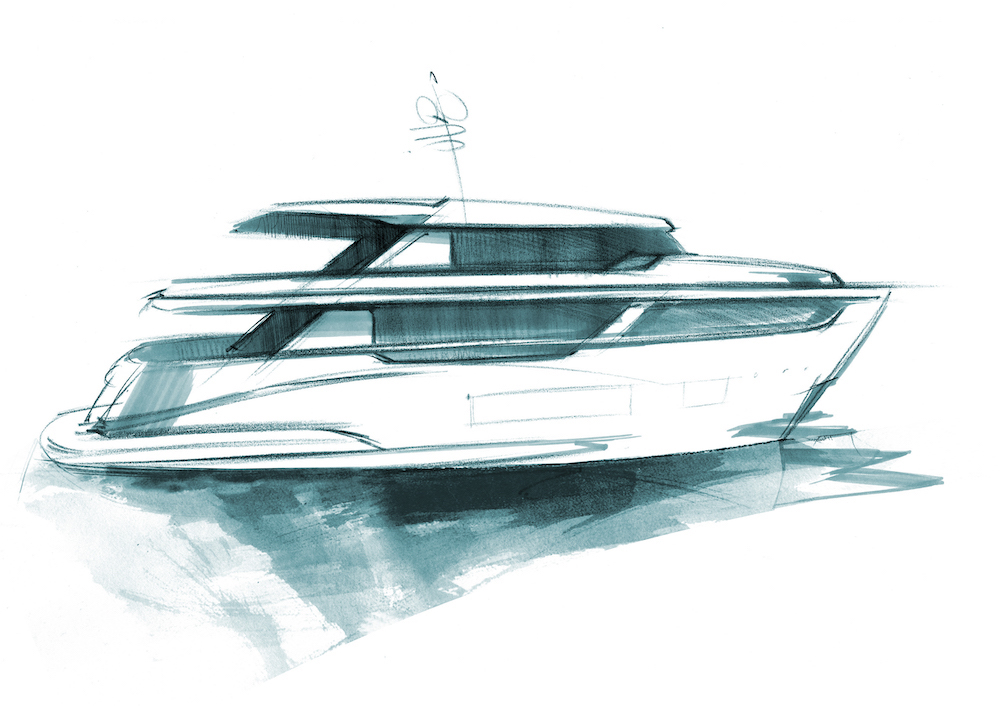
This dynamic concept makes further appearances in several of the more innovative solutions adopted. For instance, between fly and upper deck, the area of the structure that melds with the fashion plates doesn’t develop horizontally but instead has a slight curve that allowed extra height to be gained at that particular point. All of these small details make a massive difference because they marry form and function. Staying on the subject, the superstructure has been lifted by a black profile between the main and upper deck which helps to break up the volumes and lighten the boat’s monolithic architecture.

References to naval tradition are another central aesthetic element of the Navetta 30’s design. These include side bridge wings only rarely found on a boat of this size. Here they are integrated into the superstructure and only protrude enough to do their job. However, they are also part of a specific aesthetic logic because they act as either the starting point or end point of the guardrails (depending on how you are looking at them). The exceptionally seamless integration of exteriors and interiors is another central feature of the Navetta 30’s design. This influences the way in which the spaces have been conceived on the individual decks where there is no formal separation between functions. Quite the contrary, in fact. They are designed as single large surfaces in which the distinction between indoor and outdoor isn’t just blurred but completely negated. This sense of openness is further enhanced by the very direct and easy access to the sea from the cockpit. Even such small details born of the need to marry form and function reveal the thread of logic running through the model’s design.
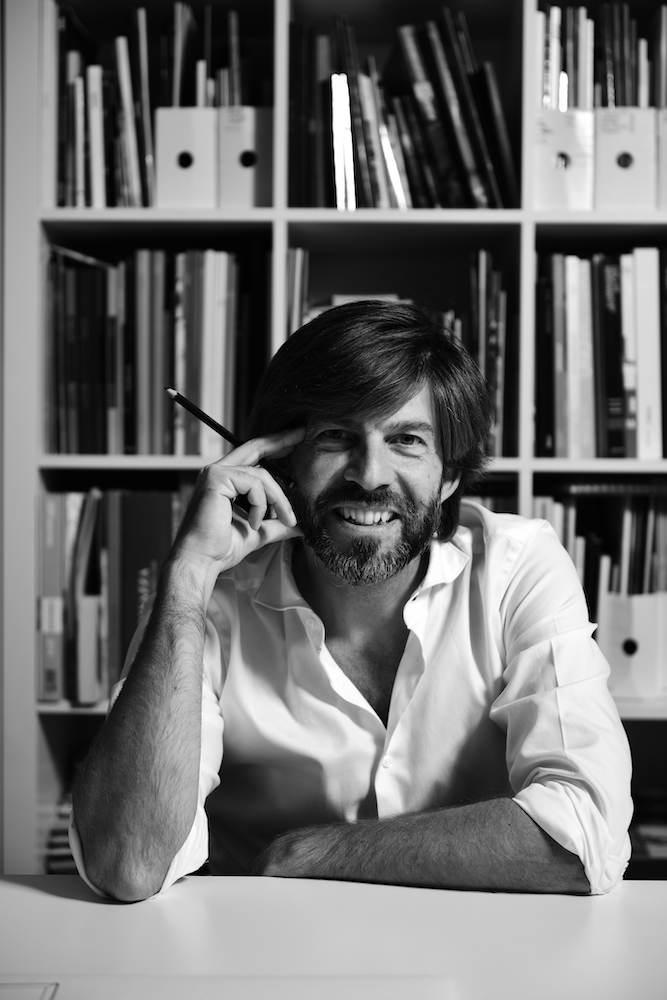
References to naval tradition are another central aesthetic element of the Navetta 30’s design. These include side bridge wings only rarely found on a boat of this size. Here they are integrated into the superstructure and only protrude enough to do their job. However, they are also part of a specific aesthetic logic because they act as either the starting point or end point of the guardrails (depending on how you are looking at them). The exceptionally seamless integration of exteriors and interiors is another central feature of the Navetta 30’s design. This influences the way in which the spaces have been conceived on the individual decks where there is no formal separation between functions. Quite the contrary, in fact. They are designed as single large surfaces in which the distinction between indoor and outdoor isn’t just blurred but completely negated. This sense of openness is further enhanced by the very direct and easy access to the sea from the cockpit. Even such small details born of the need to marry form and function reveal the thread of logic running through the model’s design.
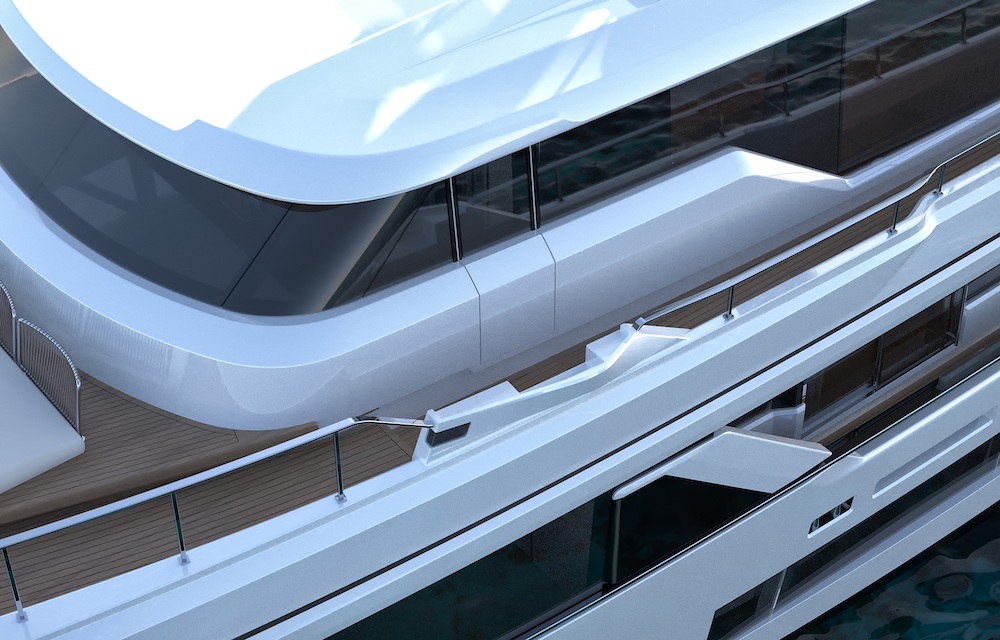
“The Navetta 30 project was a fascinating experience for me professionally,” concludes Salvetti. “Although I did the exterior design, my work harmonised and interfaced with that of the other stakeholders involved on all levels: from the interior design to the engineering. That approach proved the real trump card in this project: team work, in other words”.
Matteo Zaccagnino





